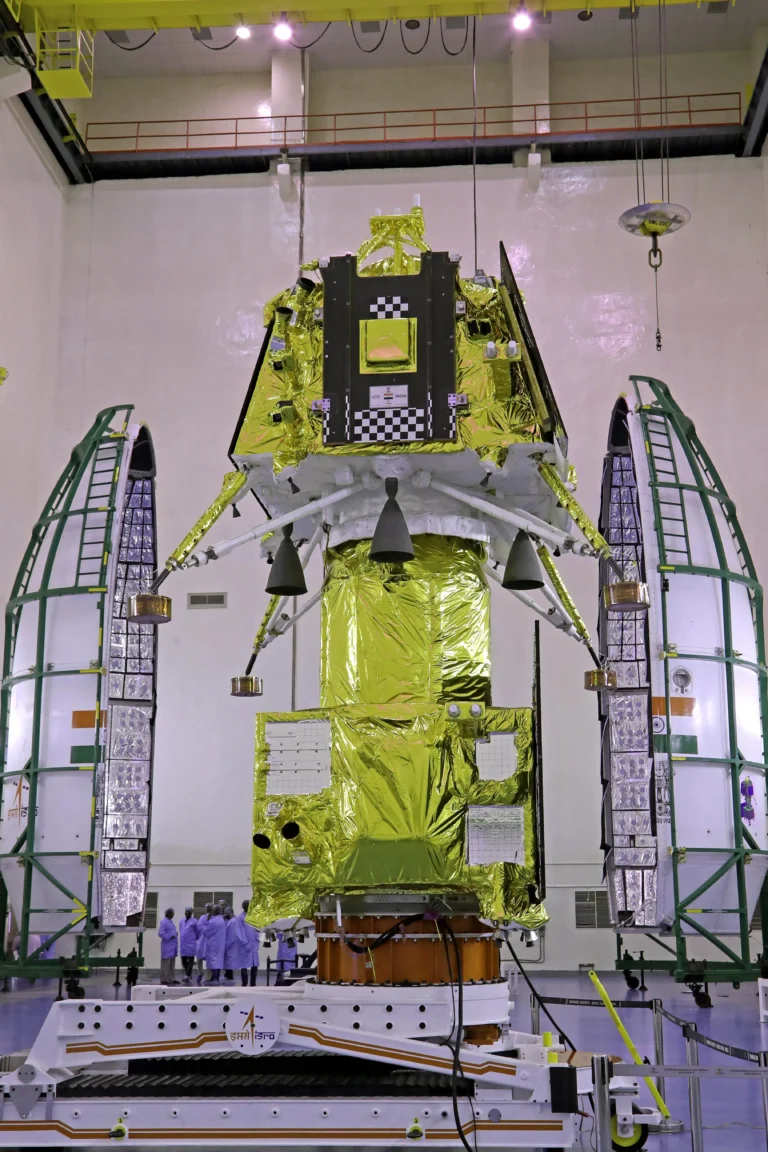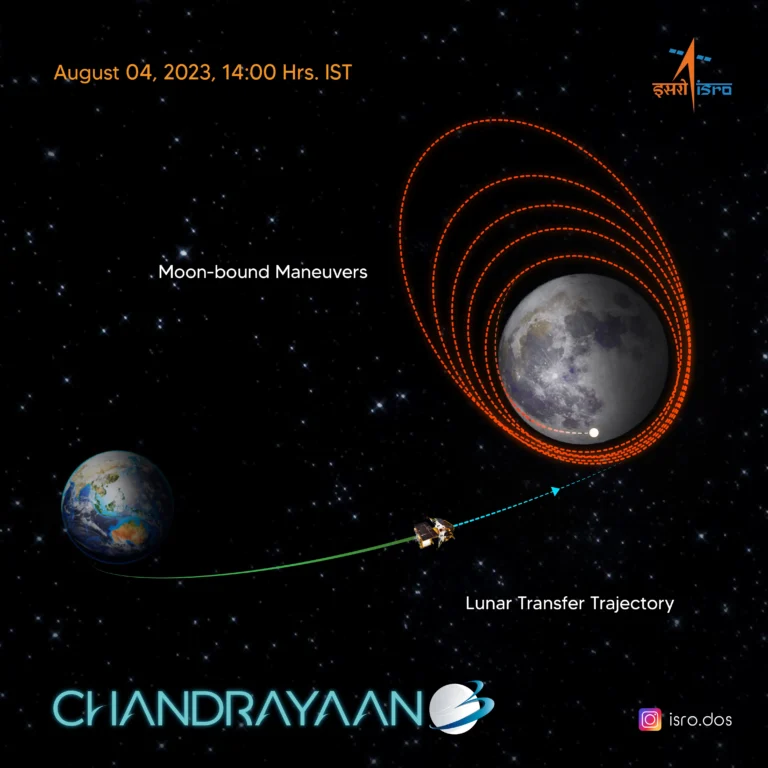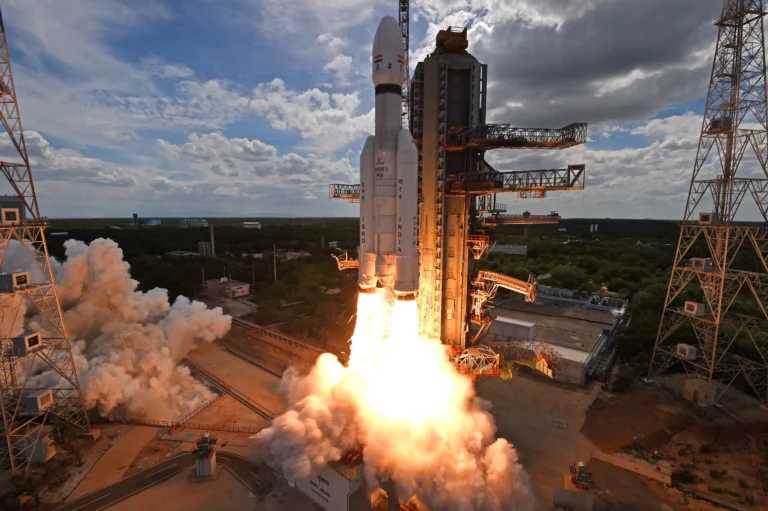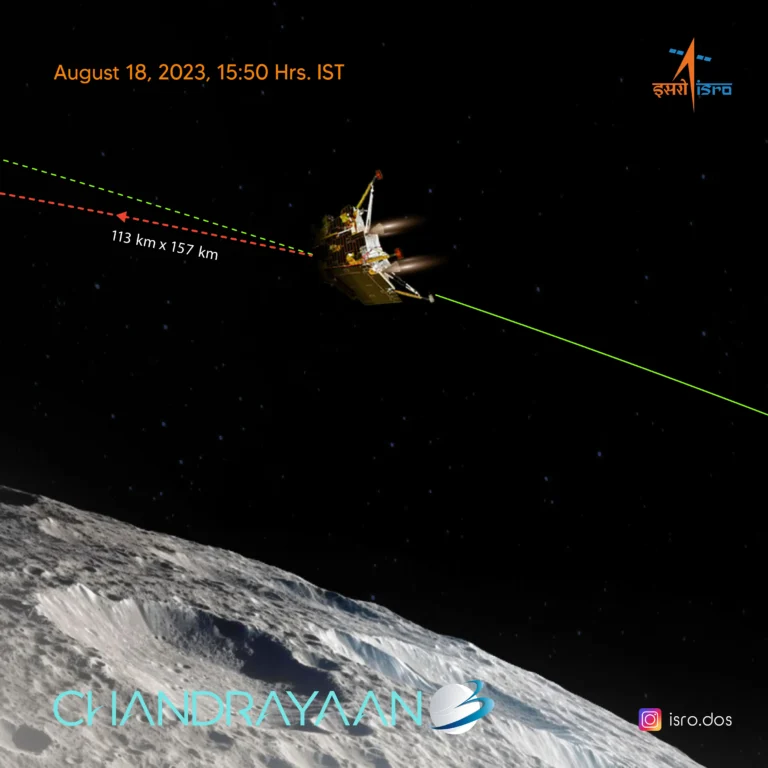Exploring the Moon’s South Pole: Chandrayaan-3’s Remarkable Physics Triumph
Chandrayaan-3 made history by bringing the mysterious lunar south pole close to us. After all that Chandrayaan-2 had gone through, the ISRO wanted to prove that what was coming in their way would instead lead them to success. The prime aim of Chandrayaan-3 was easy to express: a soft and safe landing on the southern region of the moon.
Launched from the indigenously developed Launch Vehicle Mark-3 (LVM3) at the Satish Dhawan Space Centre (SDSC) in Sriharikota, this was a milestone leap for the space research initiatives of India. For, it put India in the history books of space as the first to land anywhere on the south pole of the moon – and that gives us a sense of pride and science.

Home /Activities/ Future Missions /Chandrayaan-3 / Chandrayaan-3 Details
Unpacking the Physics of Chandrayaan-3’s South Pole Landing
Behind the success of Chandrayaan-3 lies the seamless application of fundamental physics principles. Let’s dive into the three key scientific pillars that made this extraordinary journey possible
1. Orbital Mechanics: Mapping the Cosmic Path
Orbital mechanics is the science which analyses the motion of celestial objects, and helped navigate Chandrayaan-3 toward the Moon. By developing Kepler’s adjustments to Newton’s theories, this understanding allows accurate determination of the trajectories and orbiting patterns.
Chandrayaan-3 successfully entered lunar orbit on August 5, 2023, after executing five precision orbit-raising maneuvers around Earth. ISRO successfully maneuvered the spacecraft by applying calculated thrust and gravitational forces to pull it closer to the moon’s gravitational pull.

Image Source: Chandrayaan-3 Gallery of ISRO.gov.in
2. Rocket Propulsion: The Engine of Exploration
The wonder of rocket propulsion is central to every space mission. Based on Newton’s third law of motion—“for every action, there is an equal and opposite reaction”—rocket propulsion generates the thrust necessary to send spacecraft into the universe. Chandrayaan-3 was made up of a propulsion module, a lander, and a rover, all carefully designed. The propulsion module was responsible for transporting the lander and rover from Earth’s orbit to a lunar orbit 100 kilometers above the surface. Additionally, it carried the SHAPE instrument, which was created to capture spectral and polarimetric data of Earth from space—a significant advancement in planetary research.

Image Source: Chandrayaan-3 Gallery of ISRO.gov.in
3. Attitude Control: Precision in Motion
Maintaining the spacecraft’s orientation—attitude control—is essential for the success of space missions. Following the principles of angular momentum conservation and Newton’s second law of rotational motion, Chandrayaan-3 employed a range of advanced systems, including reaction wheels, thrusters, gyroscopes, and star sensors, to stabilize and guide its trajectory.
This complex system ensured that the lander’s instruments and antennas were perfectly aligned for effective communication and observation. Drawing lessons from Chandrayaan-2, ISRO reinforced the lander’s legs, increased fuel reserves, and expanded the landing zone, demonstrating resilience and adaptability.

Image Source: Chandrayaan-3 Gallery of ISRO.gov.in
From Orbit to the Lunar South Pole: A Historic First
On August 23, 2023, Chandrayaan-3 landed safely near the lunar south pole, bringing India into the group of four countries that have successfully managed a moon landing and the first to enter this unexplored region. Chandrayaan-2 was crucial for all the advancements and information acquired, reaffirming India‘s role in taking up the mantle of global space exploration.
And so we pay our tribute to the marvelously significant day in commemoration as Chandrayaan-3 symbolizes hope and persistence in science that indicates anything can be within the ambit if the knowledge with interest is in hand.


